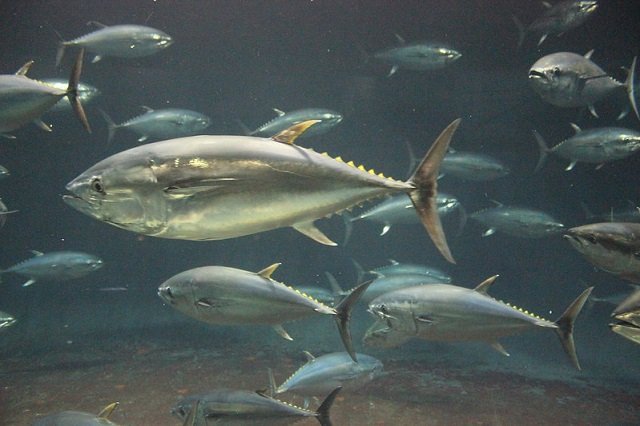The economic impact of skeletal anomalies in aquaculture is a significant problem for the industry, as deformed fish are often discarded due to their low survival rate.
A team of researchers from the Norwegian University of Science and Technology (NTNU) and the University of Las Palmas de Gran Canaria propose a method to calculate the direct costs of severe skeletal anomalies in Mediterranean hatcheries of sea bream and sea bass using a MATLAB model.
The study presents a description of the methodology and the model used for the analysis, general results, the impacts of skeletal anomalies, and a sensitivity analysis considering variations in some model parameters.
Deformities in hatchery fish
The researchers report that skeletal anomalies in fish reduce their physiological capacity to develop normally, as they grow more slowly, have lower survival rates, and experience decreased animal welfare.
They also mention that deformed fish require manual classification, increasing labor costs, while simultaneously reducing fish performance in areas such as swimming ability, conversion rate, growth rate, survival, susceptibility to stress, pathogens, and bacteria.
The study cites Berillis (2017), who classified fish skeletal anomalies into three different types:
- Vertebral and spinal malformations such as kyphosis, lordosis, scoliosis, platispondyly, and vertebral fusion;
- Bent neck, compressed snout, twisted jaw, cleft lip, or protrusion of the jaw forward and downward; and,
- Reduced lower jaw, short operculum, and reduced or asymmetric fins.
Static deterministic model in MATLAB
The researchers employed a static deterministic model programmed in MATLAB based on the models of Fernández Sánchez et al. (2021, 2022).
According to the researchers, “The production submodel includes variables associated with the production process, such as population density, feeding, fish growth, fish with severe skeletal anomalies, fish without swim bladders, fish mortality due to other reasons, and the number of fish.”
Meanwhile, they report that the economic submodel consists of variables that affect the economy of an aquaculture hatchery, such as income, input costs, labor, capital requirements, and losses/profits.
Stay Always Informed
Join our communities to instantly receive the most important news, reports, and analysis from the aquaculture industry.
Analysis of the economic impact
The study reports that the analysis of the economic impacts of mortalities caused by severe skeletal anomalies varied from 92,000 to 1,023,000 euros per small hatchery.
For medium-sized hatcheries, the economic impacts ranged from 366,000 to 4,094,000 euros per hatchery.
“Our findings suggest that larger hatcheries experience higher direct costs associated with severe skeletal anomalies, but they have better financial stability and significantly higher expected profits,” they reported.
The average results indicate that the annual economic losses from severe skeletal anomalies for Mediterranean sea bream and sea bass aquaculture are 22.88 million euros per year for a scenario of low-severity skeletal anomalies, 65.34 million euros per year for a scenario of medium-severity skeletal anomalies, and 115.98 million euros per year for a scenario of high-severity skeletal anomalies.
Conclusion
“The above results for the entire Mediterranean sea bream production show that annual economic losses due to severe skeletal anomalies can range from 8.4 to 85.2 million euros, depending on the considered scenario. Meanwhile, for the Mediterranean sea bass industry, annual economic losses due to severe skeletal anomalies can range from 6.6 to 66.8 million euros, depending on the considered scenario,” they concluded.
They also highlighted that the study’s findings suggest that increasing fry selling prices, reducing FCR (feed conversion ratio), and reducing the unit cost of food are three options to increase the financial stability of hatcheries.
The study is part of a project funded by the European Union’s Horizon 2020 research and innovation program under the Marie Skłodowska-Curie grant.
Contact
Javier Cantillo
Department of Industrial Economics and Technology Management
Norwegian University of Science and Technology (NTNU)
Trondheim, Norway.
Email: javier.cantillo@ntnu.no
Reference (open access)
Cantillo, J., Martín, J. C., & Román, C. (2023). Assessing the economic impacts of severe skeletal anomalies in Mediterranean hatcheries culturing seabream and seabass. Journal of the World Aquaculture Society, 1– 24. https://doi.org/10.1111/jwas.13008
Editor at the digital magazine AquaHoy. He holds a degree in Aquaculture Biology from the National University of Santa (UNS) and a Master’s degree in Science and Innovation Management from the Polytechnic University of Valencia, with postgraduate diplomas in Business Innovation and Innovation Management. He possesses extensive experience in the aquaculture and fisheries sector, having led the Fisheries Innovation Unit of the National Program for Innovation in Fisheries and Aquaculture (PNIPA). He has served as a senior consultant in technology watch, an innovation project formulator and advisor, and a lecturer at UNS. He is a member of the Peruvian College of Biologists and was recognized by the World Aquaculture Society (WAS) in 2016 for his contribution to aquaculture.




